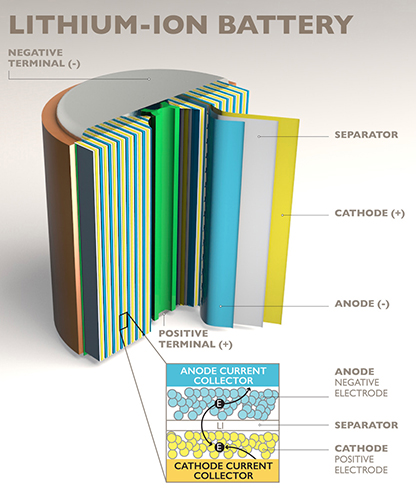As the US works to accelerate the EV transition, the key to higher efficiency batteries lies within silicon anode innovation.
By Michelle Tokarz, VP of Partnerships & Innovation at The Coretec Group
The future of driving in America is electric. It may not be happening overnight, but the nation is certainly headed in the direction of adopting electric vehicle (EV) technology en masse. What used to be a novelty is becoming more commonplace with each passing day: you notice more charging stations around your town, you see more commercials during football games, that neighbor or acquaintance starts driving one; their presence in the culture is here not just to stay, but to grow.
There’s just one problem: the US is way behind on their battery development.
Lithium-ion batteries, the batteries used to power electric vehicles, are the centerpiece of the industry. Unfortunately, the US lacks proper access to the essential raw materials needed to make them at the rates they are needed. Fewer batteries means fewer EVs, which slows the crucial EV transition desperately needed to put a dent in a worsening climate change.
If the US is to catch up to its competitors and have a greater role in the energy transition industry, it needs to empower its brightest scientists to innovate on the current EV battery standard and create something that exceeds their current limitations.

The three key limitations that today’s EV batteries give prospective consumers hesitation when considering going electric are:
The material capable of alleviating all three of these concerns is silicon, as opposed to graphite which has been the longstanding material standard for most lithium-ion batteries. Graphite has been reliable but doesn’t allow batteries to perform to their full potential, and with China, the main provider of graphite to the US, tightening its exports on the material, it is time to explore another material with the potential for even greater efficiency.
Silicon can multiply an EV battery’s charge capacity up to 10X; a remarkable breakthrough, but one that has been difficult to capitalize on, as most manufacturers are only able to integrate about 5%-10% of silicon in their battery anodes, thanks to an unfortunate combination of pulverization and the build-up of cumbersome byproducts.

These pulverization and byproduct hurdles come from the cycle of expansion and contraction that occurs during battery charging and discharging, due to the Solid-Electrolyte-Interphase (SEI) that forms atop the anode’s surface, which is quite brittle and easily decays into byproducts during expansion and contraction. As it decays, more and more lithium is consumed, causing the battery’s performance to degrade.
This is where nanoparticles come into play. Nanoparticles can be made in one of two ways:
With a bottom-up approach, scientists have the unique ability to maintain firm control over the size and shape, and exterior chemistry of the nanoparticles, allowing for precise manipulation to perfectly suit the given battery setting. In turn, these nanoparticles cause discernibly less pulverization and waste build-up, allowing the battery to be infused with more silicon than the previous 5%-10% threshold.
So, what does all this mean; what does the consumer get out of this?
These batteries are of a much higher efficiency and performance than the current industry standard and are able to last much longer off a single charge, charge faster when its power gets low, and live an overall longer life, clearly addressing and alleviating the three key, aforementioned concerns consumers have when it comes to EV adoption.
The world is going electric, and the US is no different, but if it wants to play a major role in the energy transition’s fight against climate change then it needs to move quickly and look to the scientists and the companies who are actively working toward the creation of next generation lithium-ion batteries to power it. Anode innovation is the key to bringing batteries in the US to the next level, to quell the concerns of the consumer, and lead EV adoption en masse.

Dr. Michelle Tokarz, VP of Partnerships and Innovation, works closely with Coretec’s global research institutions as they evaluate the company’s CHS technology to further the patenting of their intellectual property and customers as they integrate CHS into their proprietary processes. Michelle has a long history of working for startups. She spent seven years working in the pharmaceutical industry holding research chemistry and subsequent production roles for Merck and Eli Lilly. Michelle participated with and assisted several teams in NSF ICorp customer discovery sessions leading several teams through the initial, as well as the full-scale, national program, and has also participated in several NSF SBIR review boards. She earned her Ph.D. in Materials Science and a dual Master’s degree in Mechanical Engineering and Materials Science from the University of Michigan in Ann Arbor.
Scott Ellyson, CEO of East West Manufacturing, brings decades of global manufacturing and supply chain leadership to the conversation. In this episode, he shares practical insights on scaling operations, navigating complexity, and building resilient manufacturing networks in an increasingly connected world.